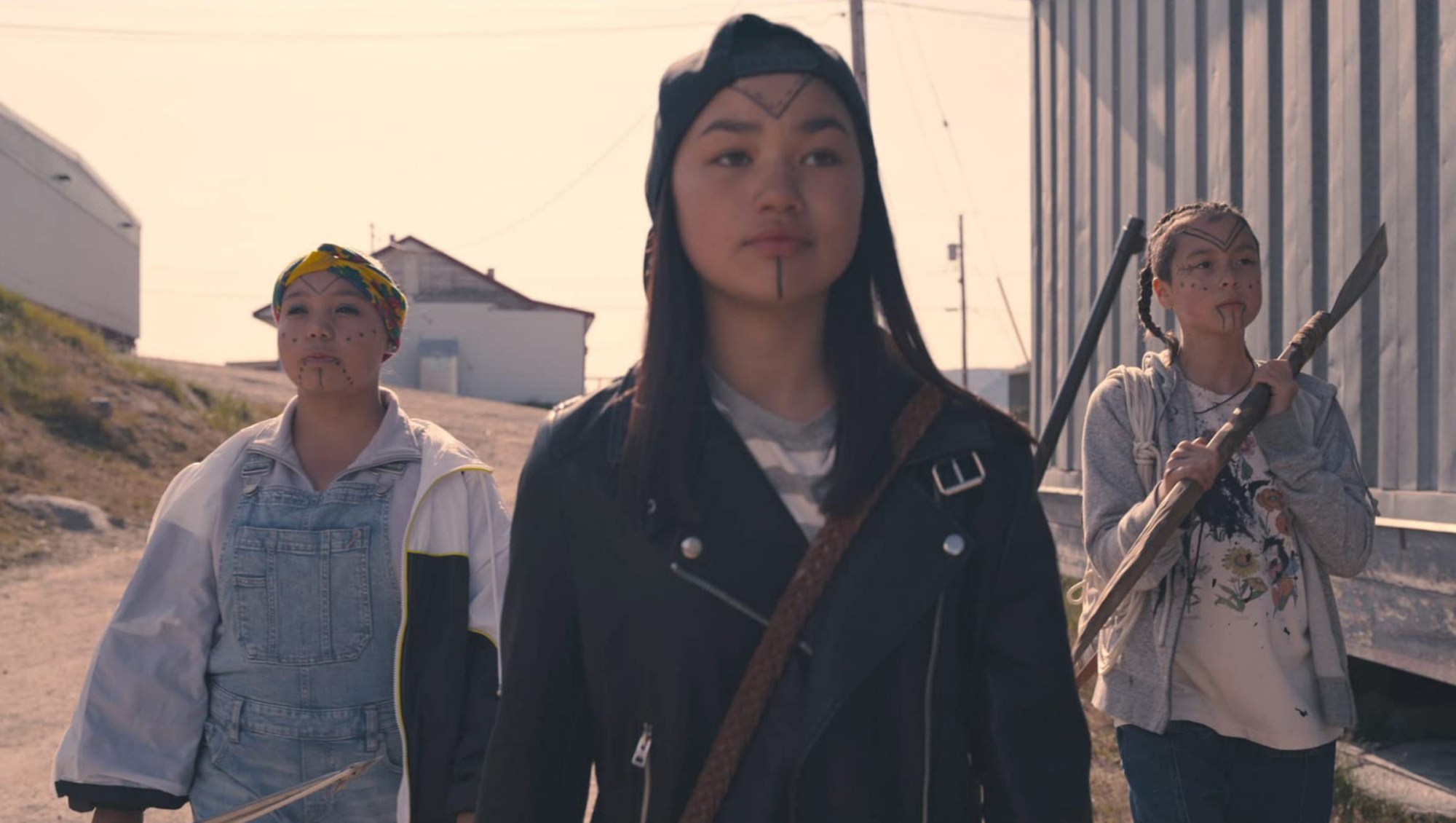
- Film
“Slash/Back”: Sci-Fi on a Shoestring Budget
“Slash/Back”: Sci-Fi on a Shoestring Budget
By Margaret Gardiner
The Golden Globes are always searching for the best of the best. They also have a history of celebrating new talent and new shows.
The great thing about discoveries is how unexpected they are.
On a rainy Belgian night I found myself, without expectations, watching a film as the raucous crowd was encouraged to yell at the screen – all in the vein of the Brussel’s International Fantastic Film Festival tradition. Interestingly, the catcalls, part of the fun of that festival, soon disappeared as the quality of execution on a bare budget was revealed.
Slash/Back is a deceptive film. On the surface it’s a universal ‘sci-fi’ story. It tells of an alien attack on an under-represented community, the Inuktitut, an indigenous Canadian people.
That its telling takes place amongst this population, and that the story is not dependent on this community and location, makes it rare and worthy of further discussion.
Despite receiving a 92% approval rating on Rotten Tomatoes and being the opening feature at the Toronto International Film Festival’s Next Wave Film Festival, the film slipped past many viewers’ awareness in 2022.
Essentially, it is about a group of Indigenous girls who take on an alien force. The female protagonists work together, innovate and, in so doing, showcase people who seldom have positive representation as they save the world. The social exposés are an adjunct to the main theme of the film and are ‘revealed’ rather than ‘messaged’. In so doing, Slash/Back covers themes a horror audience might not be expecting.
At its most simplistic, it’s a ‘coming of age story’, exploring group dynamics, friendship, first boyfriends, and…. space aliens. There is a really dry sense of humor, very good character renderings, and potential breakout roles from a few of the actors, most of who had never before performed. But it is so much more than that.
One wonders if the Inuktitut’s social disparities are not the intentional ‘horror’ of this tale.
Slash/Back reveals a culture and a place in time: the morays of the Inuktitut, the biases of ‘whites’ towards a group surviving with little in an ostracized community. It displays its harshness without commentary, letting the audience link the underbelly of the film. The alien story is the through line, but the setting reveals indisputable disparity without compromising the sci-fi aspects.
The importance of community representation in institutions of power, like the police force, resonates. We note the need for multigenerational families as mothers and fathers work, leaving children unsupervised in environments starkly denuded of opportunity and stimuli.
The cavalier response to the disappearance of a young Inuktitut girl – taken, on this occasion, by supernatural beings – reminds us of young Indigenous Canadian women disappearing with little urgency, or interest to investigate by official forces.
In reality, young Indigenous Canadians and Americans disappear in such numbers that it could be called an epidemic.
In 2016 the US Department of Justice’s federal missing person database, NamUs, only logged 116 of 5,712 reports of missing Indigenous Americans and Alaskan women and girls. For decades these communities have struggled with high rates of assault, abduction, and murder of women. The film exposes this tragedy as one of many discoveries revealed in the telling of the central horror / sci-fi story.
Subtly, the question is evoked: what is the horror? The alien invasion, or a community that is exploited and isolated? Do the aliens stand for invading Europeans ravaging indigenous communities?
On December 2, 2022, The Guardian newspaper noted that as many as 4,000 Indigenous women and girls are believed to have been killed or gone missing in Canada over the past 30 years. The article points out that Indigenous women are six times more likely to be murdered than non-Indigenous women.
That’s a prompt you don’t expect in a low-budget, alien invasion movie.
There’s a lot of subtle politics packed into Slash/Back. Director Nyla Innuksuk is one to watch. Her trajectory with a bigger budget is certain.
The film was shot under such depleted conditions that, when production began in 2019, in Pangnirtung, Canada, they had to fly in fifty beds for the crew, which were set up in the local school.
And, so, we return to the relevance of film festivals. For movie lovers, the thrill of sitting in darkness, surrounded by strangers and being moved in unexpected ways is a gift. To have the experience again, after Covid kept us apart, is thrilling.